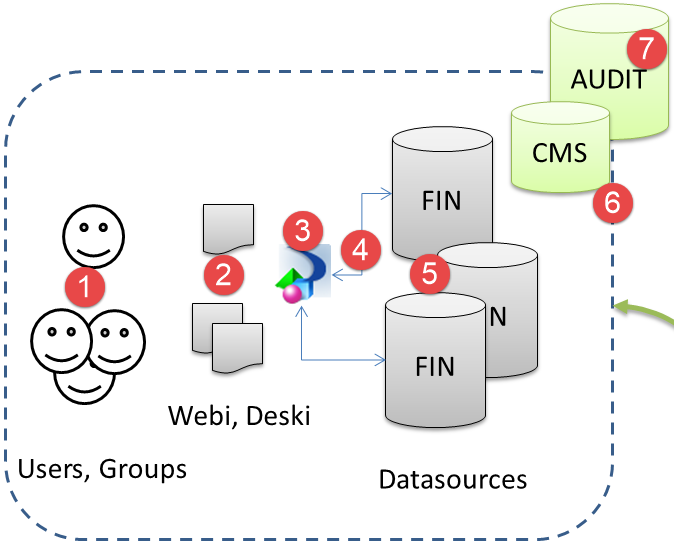Business Objects
MetaMiner operates complex structures of Business Intelligence (BI) documents and other objects. This topic gives you a general explanation about these business objects and their relationships. This fundamental knowledge (what are key objects, their roles, and how they are interconnected) is important to have for reading the rest of MetaMiner documentation and for using the product.
Key business objects operated by MetaMiner:

![]() Users and Groups: MetaMiner deals with Enterprise user accounts and user groups created within SAP BusinessObjects suite. Browse users and groups with the Users application tab in MetaMiner Client.
Users and Groups: MetaMiner deals with Enterprise user accounts and user groups created within SAP BusinessObjects suite. Browse users and groups with the Users application tab in MetaMiner Client.
![]() Documents: all objects found on your BI landscape and stored within SAP BusinessObjects. Each document belongs to one of Document Types (or Kinds). Primary tool to access documents in MetaMiner - CMS Explorer.
Documents: all objects found on your BI landscape and stored within SAP BusinessObjects. Each document belongs to one of Document Types (or Kinds). Primary tool to access documents in MetaMiner - CMS Explorer.
Reports: Web Intelligence reports can have multiple instances, i. e. their structure can be filled with different content.
![]() Universes: semantic layer that represents some part of your corporate data in a structured way. Universes can be of UNV or UNX type. See Universes, Impact Analysis - Universe.
Universes: semantic layer that represents some part of your corporate data in a structured way. Universes can be of UNV or UNX type. See Universes, Impact Analysis - Universe.
![]() Connections: connection is a link between a universe and a datasource of your corporate data. Connections can be of Relational or OLAP type. See Connections (CMS Explorer).
Connections: connection is a link between a universe and a datasource of your corporate data. Connections can be of Relational or OLAP type. See Connections (CMS Explorer).
![]() Datasources: information storages that provide business information to a universe via a connection.
Datasources: information storages that provide business information to a universe via a connection.
![]() CMS environment: structured corporate data, hosted by a single SAP BusinessObjects Central Management Server.
CMS environment: structured corporate data, hosted by a single SAP BusinessObjects Central Management Server.
Audit DB: auditing database, provided to MetaMiner by SAP BusinessObjects.
See also
How MetaMiner fits within Your Organization